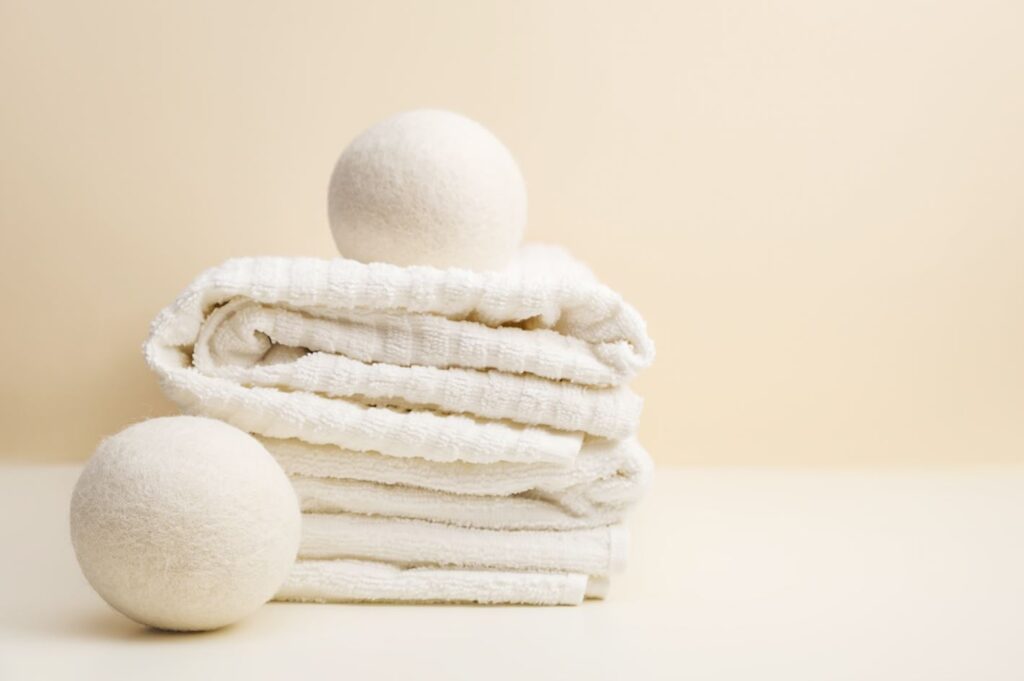Have you ever stepped out of the shower and grabbed a fresh towel, only to realize that it’s stiff and scratchy? Unless that towel is meant to double as an exfoliating tool, you might want to consider adding some fabric softener to your next laundry cycle. The most likely culprit behind rough, dry-feeling clothing and linens is water that’s particularly high in minerals, also known as “hard water.” Like its name suggests, hard water tends to have a stiffening effect on fabric. But have no fear—fabric softener to the rescue! To find out more about this powerful laundry ally, read on.
What is fabric softener?
Fabric softener is a laundry product whose purpose is to improve the look, feel, and smell of the items that you machine wash. It does this primarily by depositing a thin layer of softening agents onto the fibers of your fabric during the washing process, smoothing the fibers and reducing the friction generated by the wash cycle. Clothes and linens come out of the machine softer to the touch, less prone to static, easier to iron, better protected from wear and tear, and sweetly scented too.
What kind of fabric softener should I buy?
While fabric softeners exist in the form of liquid, dryer sheets, and dryer balls, liquid is by far the most common form. Liquid fabric softener comes in a rainbow of colors and an endless array of fragrances, from the most exotic to the most discreet. Whether your choice is based on scent, ingredients, or price, be sure to check the label to help you decide.
How should I use liquid fabric softener?
Liquid fabric softener is usually (but not always!) added at the same time as your detergent. Where you add it depends on what type of machine you have.
- Top-loading or front-loading: use the cap of the softener bottle to measure the recommended amount of liquid. Pour into the dispenser tray, slot, or column. If there are multiple areas designated for detergent and/or softener, be sure to choose the area marked by a six-petaled flower symbol.
- No dispenser: if you are using a store-bought dispenser such as a ball, fill the dispenser to the indicated mark and place in the machine just before launching the wash cycle. The ball will pop open at the right time, releasing the softener. You may retrieve the ball safely once the full cycle has finished. If you do not have a ball, you can still add fabric softener manually at the start of the rinse cycle, taking care to pour it into water and not directly onto any clothing, as this could cause staining.
What about dryer sheets and dryer balls?
Dryer sheets and dryer balls are intended exclusively for use in a dryer. Sheets are similar to liquid softener in that they contain substances that coat the surface of fabric, reducing static and friction, whereas dryer balls contain no substances but still create a fluffing effect by virtue of colliding repeatedly with fabrics as they tumble dry.
A word of caution
Fabric softener should not be used on certain kinds of clothing, either because the coating is harmful to the fabric or because it reduces certain protective properties, in particular flame resistance. Avoid using fabric softener (other than dryer balls) on the following:
- Wool
- Microfiber
- Children’s pajamas
- Water-repellant clothing
- Swimwear and sportswear containing elastane
For more tips on how to care for your favorite clothes and linens, visit our special fabrics section.
